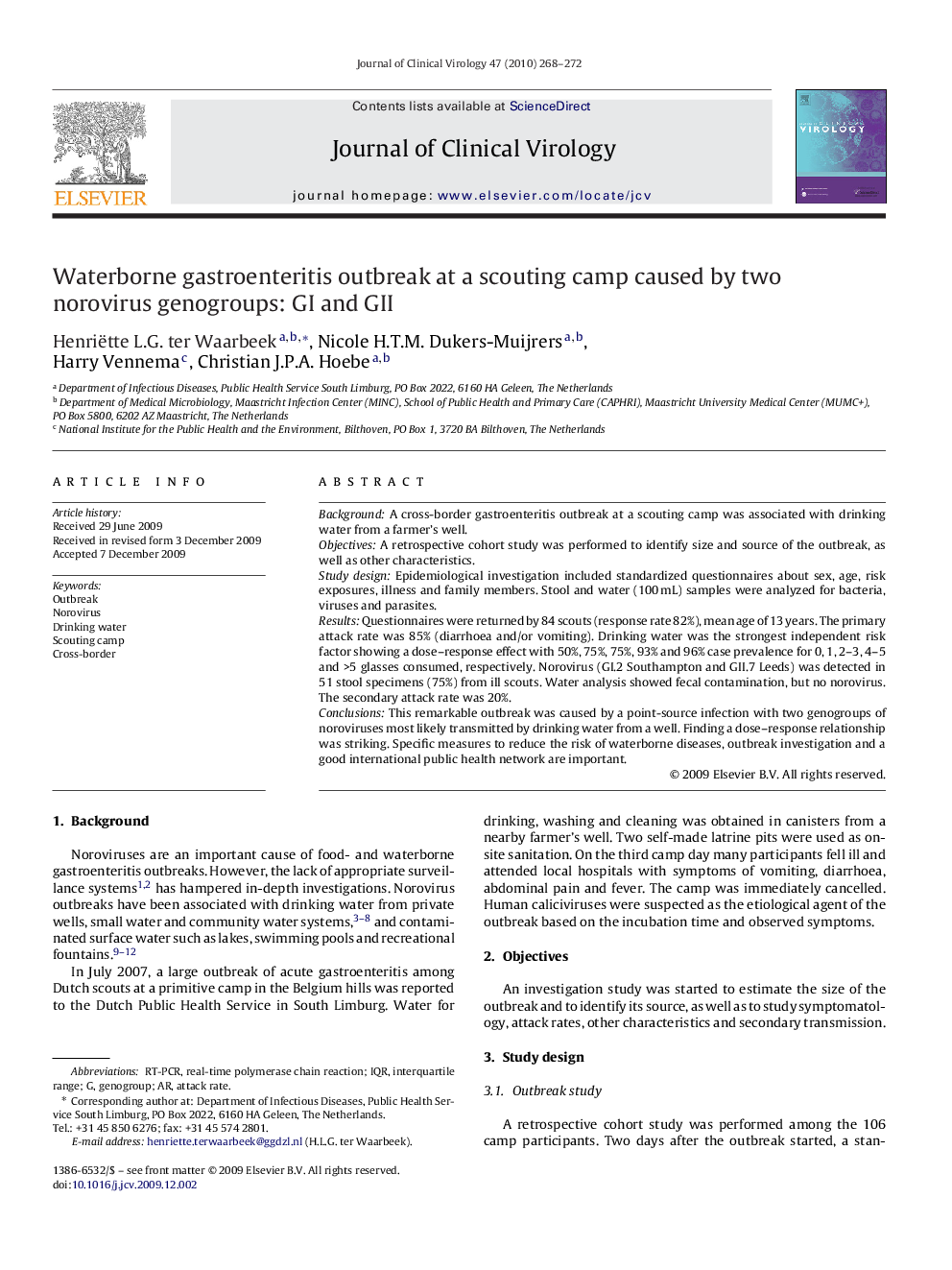| Article ID | Journal | Published Year | Pages | File Type |
|---|---|---|---|---|
| 3369420 | Journal of Clinical Virology | 2010 | 5 Pages |
BackgroundA cross-border gastroenteritis outbreak at a scouting camp was associated with drinking water from a farmer's well.ObjectivesA retrospective cohort study was performed to identify size and source of the outbreak, as well as other characteristics.Study designEpidemiological investigation included standardized questionnaires about sex, age, risk exposures, illness and family members. Stool and water (100 mL) samples were analyzed for bacteria, viruses and parasites.ResultsQuestionnaires were returned by 84 scouts (response rate 82%), mean age of 13 years. The primary attack rate was 85% (diarrhoea and/or vomiting). Drinking water was the strongest independent risk factor showing a dose–response effect with 50%, 75%, 75%, 93% and 96% case prevalence for 0, 1, 2–3, 4–5 and >5 glasses consumed, respectively. Norovirus (GI.2 Southampton and GII.7 Leeds) was detected in 51 stool specimens (75%) from ill scouts. Water analysis showed fecal contamination, but no norovirus. The secondary attack rate was 20%.ConclusionsThis remarkable outbreak was caused by a point-source infection with two genogroups of noroviruses most likely transmitted by drinking water from a well. Finding a dose–response relationship was striking. Specific measures to reduce the risk of waterborne diseases, outbreak investigation and a good international public health network are important.
